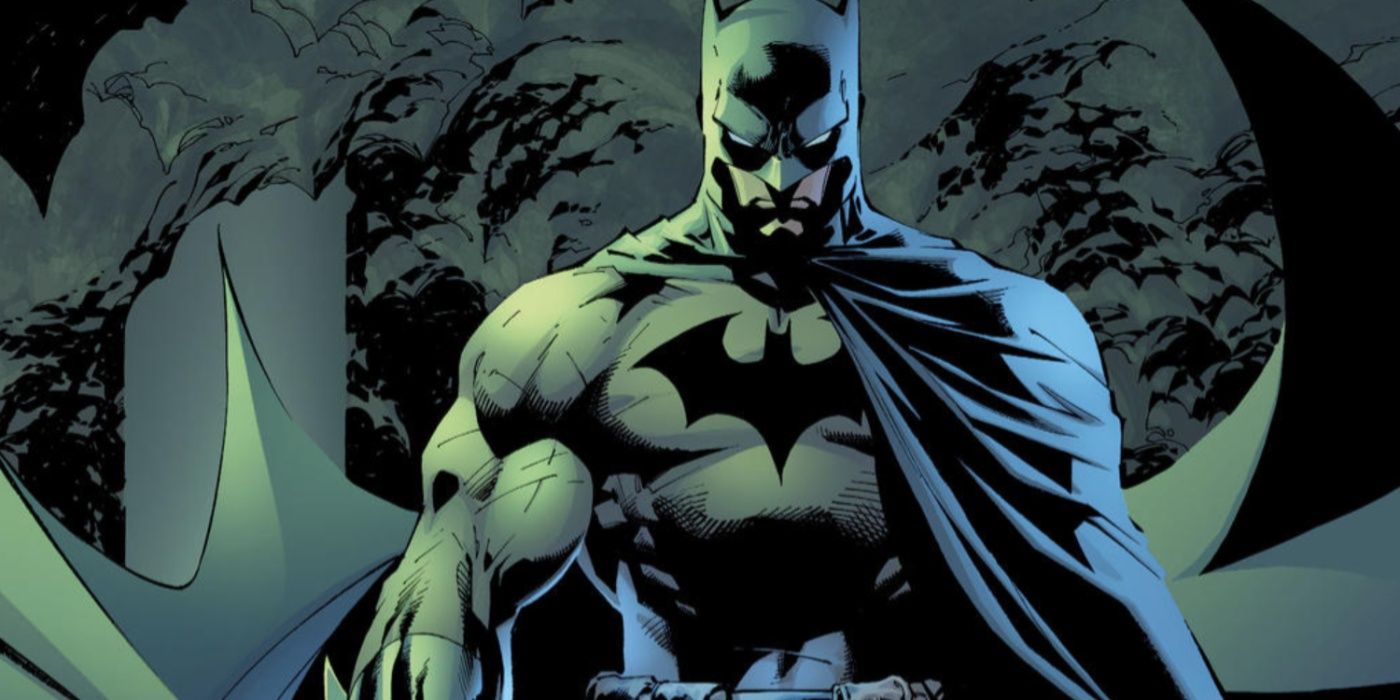Since the Golden Age of DC Comics, Batman has been a source of some of the greatest stories in print, thanks to his detective skills, great villains, and action-packed adventures. However, it’s hard to deny something uniquely dark about the hero’s modern stories, moving well beyond the gritty nature of most hero comics. It’s worth examining, across his long history, exactly when Batman made the dark turn that defines him today.
The Dark Knight’s darkness has always been a feature of his stories. Since his very first adventures in print, he’s been a blend of classic film noir, street-level detective work, gangster stories, and even a little horror. However, the Dark Knight has also undergone a great deal of evolution. Many writers and artists have stepped up to leave their own unique marks on the character. For most modern readers, there is something particularly dark and grim about the hero who can never catch a break, always being dragged down to his next dark unraveling. It wasn’t always this way for Bruce Wayne. Over the years, some creative eras have contributed more than others in portraying the Caped Crusader as Gotham City’s brooding protector. It’s debated just how grim Batman should be, but fans can easily trace when comics began embracing a grimmer style and atmosphere in the Dark Knight’s comics.
RELATED: Inspiration Vs. Template: Should New DCU and MCU Adaptations Match The Comics?
Batman’s Golden Age Origins
While Batman’s darkness has increased in the Modern Age of comics, it’s worth noting he did begin as a gritty, dark hero. After all, his first story was essentially a plagiarized Shadow story by Bob Kane — Shadow himself being a dark, pulpy antihero. Batman was never meant to be an uplifting hero like Superman or a friendly character like Flash or Spider-Man. This Golden Age Batman wasn’t as dark as he is today, but he came pretty close. In fact, considering the Batman of the ’40s was more than willing to use both guns and lethal force, he stands out as darker in some ways.
Like all the Golden Age DC heroes, this Batman moved to Earth-2, where he attempted to slip into retirement, later being pulled out. Here, he met a grim demise when Steppenwolf, in possession of a rage-fueled magic, burned the hero alive, with both of them perishing together. However, thankfully, the Earth-2 hero has featured in stories since. The 1930s and ’40s Batman borrowed a lot more from classic film Noir and the Golden Age of horror cinema. It wasn’t at all uncommon to see this Batman battle gangsters, evil scientists, or serial killers. In one of his earlier encounters with Joker, the hero killed his arch-rival.
RELATED: 10 Best DC Comic Events That Actually Changed The Status Quo
The Campy Silver Age Batman
Like with many heroes, Batman received a campy, brighter makeover in the Silver Age. Here, his stories suddenly gained some color, eccentricity, and novel ideas. While Batman kept his stern personality, the world around him brightened up. Robin channeled a wholesome youthful energy, and the era explored Batman’s friendship with Superman through World’s Finest. One of the charms of this era was how Bruce Wayne was written to be well-adjusted. Rather than the endlessly brooding hero who obsesses over the death of his parents, ’50s Batman had no trouble cracking a smile. The Silver Age Bruce Wayne had more of an upbeat personality to him, and it never felt like a facade. Batman was a good detective, but his trauma did not weigh him down.
Batman’s brighter transformation began just before the Silver Age officially kicked off in 1956. In fact, the hero’s ’50s era was actually sometimes more colorful and imaginative than most fellow DC characters. Between the 1950s and 1960s, Batman had classic capers involving his rainbow suit, a few tussles with gorillas, and adventures with classic knights in shining armor. Eccentric foes like Crazy Quilt, Polka-Dot Man, Kite-Man, and Mr. Freeze proved the Caped Crusader’s world didn’t take itself too seriously. Indeed, many of Batman’s most creative rogues stemmed from this era, and some of his strangest adventures spun out of his sci-fi stories, like the creation of the Batman of Zue-En-Arrh (before he became one of the Batman’s personalities).
RELATED: 10 Things Batman Does Better Than Superman (& Always Will)
The Bronze Age Got Dark
In the Bronze Age of comics, Batman was in safe hands on day one. After Frank Robbins departed the main Batman title, the legendary creative pairing of Dennis O’Neil and Neal Adams began. This run leaned more into a horror-themed, dark detective version of Batman. It also introduced Ra’s al Ghul and sent the hero on some of his best cases. These included Batman facing off with cults, assassins, dark magicians, and monsters — even fighting some fellow heroes and working in the shadows. This was also the era when Batman first quit the Justice League, forming a covert team, the Outsiders. The Bronze Age became the origin of the scheming, secretive Bruce Wayne who strategized from the Batcave rather than coordinating with his peers.
The Bronze Age was a return to much of what had made the Golden Age interesting. The era featured grounded, street-level heroes, threw off the shackles of the Comics Code Authority, and dabbled in horror and genre versatility. However, Batman’s comics didn’t go al the way dark. Dick Grayson was still in the picture, and Bruce even had some love interests, like Vicki Vale. This version of Batman was certainly dark and brooding, but he hadn’t developed many of the deep character flaws that define him today, like paranoia and secrecy. The Batman of the Bronze Age wasn’t as Machiavellian or antagonistic towards his friends as he is today. During this era of DC Comics, creatives reintroduced Joker and immediately established him as Batman’s true arch-nemesis.
RELATED: 10 Main Reasons DC Will Never Completely Reboot Batman
How The Modern Age Cemented The Darkness
The Modern Age of comics was, ultimately, the place where Batman really went dark, especially through the 1980s. Here, stories like Batman: Year One, The Killing Joke, and The Dark Knight Returns formed something of a trinity of how the Bat-books should be written. Whether it was a more ultra-violent take on some of the hero’s enemies, the deconstruction of the Caped Crusader himself, or the grim fate that befell his friends, 1986-1990 was where modern Batman was born. These five years reshaped everything it meant to be a Batman fan, especially thanks to Tim Burton’s 1989 Batman movie, which borrowed from the ’80s comics the most. The creators of this era, notably Jim Starlin, Frank Miller, Alan Moore, Alan Grant, and John Wagner ushered in the Batman people know and love today. They were aided by well-suited artists like Jim Aparo, Norm Breyfogle and Brian Bolland. Batman’s versatility could likewise be seen through his crossovers with characters like Spawn and Judge Dredd.
Batman had his darker streak in the ’80s amplified through the edgy 1990s. This took the hero to his lowest when Bane broke his back and the chaotic Azrael usurped his mantle. A disabled Bruce Wayne was forced to sit on the sidelines as an increasingly violent Jean-Paul Valley besmirched Batman’s reputation. After Bruce healed his body, he returned to Gotham City, fought Azrael, and reclaimed his mantle. However, it’s hard to deny this event was a flashpoint in the hero’s history, showing people that the Bat could be broken. The ’90s as became something of an inflection point for Batman. The works of Chuck Dixon, Graham Nolan, Doug Moench and the continued works of Grant, Breyfogle, and Wagner continued what had been defined in the late ’80s. Batman: the Animated Series furthered played into the comics’ grim tone, showcasing a dark detective as the definitive take on Batman.
In the 2000s, Batman received perhaps his biggest changes in the Modern Age through Grant Morrison’s run. By no means was this the hero’s darkest era, but the run brought about some psychological exploration. It also introduced Damian Wayne. Morrison’s work contained homages to Silver Age Batman, a nod to the work of O’Neil and Adams and their own uniquely psychologically oriented writing. This should also be combined with the works of Matt Wagner, Jeph Loeb and, of course, the legendary creative pairing of Scott Snyder and Greg Capullo. However, these fantastic creators simply continued the dark and gritty tone that had already been laid out before them. That said, it’s hard to deny Snyder and Capullo upped the ante on the level of graphic violence in the Caped Crusader’s comics.
RELATED: 10 DCAU Questions That A Justice League Infinity Sequel Could Answer
Batman Was Always Dark
While Batman has, as a character, always had a dark streak about him, the ten-year stretch from around 1985 to 1995 is where the modern understanding of the hero was born. The hero had evolved from the stern yet standard street-level hero of the Golden Age to the intelligent detective of the ’70s and culminated in the gritty antihero of Frank Miller. From The Dark Knight Returns and onward, the hero became a combination of strategist, dark detective, street-brawler and, at his heart, a dark avenger of the night. This Batman served one core purpose: bring violence to evildoers. It was also through his animated adventures where he was reintroduced to the mainstream as a brooding detective. Even today, many comic writers draw inspiration from the Dark Knight’s beloved animated series.
Batman’s modern stories wouldn’t be what they are without the combined works of Alan Moore, Frank Miller, Jim Starlin, Alan Grant and John Wagner, who all contributed to the brooding Caped Crusader of today. Through seminal series like Legends of the Dark Knight, Shadows of the Bat and tales like Knightfall and The Killing Joke, creators have firmly established the Caped Crusader as DC’s darkest tool of justice. The shadowy, scheming fighter, often an enemy of his fellow heroes, owes his consistent darkness to those creators. However, the Bronze Age and early Golden Age set Batman up for this gritty transformation, allowing later comics to amplify what was already there.
Since the Golden Age, Batman has been DC’s darkest detective. However, his comics have certainly taken a decisively grim twist in modern times. Read More

